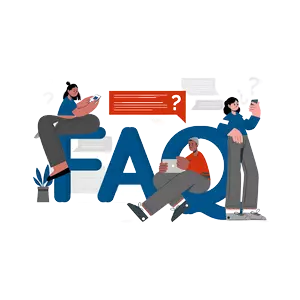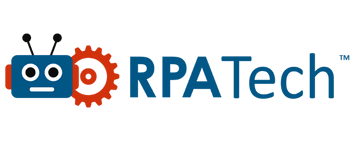FAQs

FAQs for Business Owners/Decision Makers
RPA is a platform that enables organizations to automate their monotonous but critical processes. It impersonates human actions to execute tasks swiftly.
As the name suggests, we are discussing robots here. However, these are not physical machines but software robots that execute processes (coded on an RPA platform) in the same manner as a human being does. It is also known as a virtual workforce.
This is a low code/no code platform. Tasks can be automated with drag and drop functionality.
Processes that are digital, UI-based, repetitive, standardized or well-defined, and not reliant on human cognitive intelligence can be automated.
Yes, absolutely! For data extraction, we need an OCR (Optical character recognition) engine which can be integrated for standard and custom data extraction from documents.
Data extraction can be done from scanned documents, True PDF, .JPG/.JPEG/.PNG/.TIFF, HTML type documents.
Yes, a bot can interact with the database for reading, fetching, and storing data into databases or processing it to other applications.
No data is stored in the bot, making it a completely secure platform. The bot only executes the process as designed.
There are two types of bots available: attended and unattended.
An attended bot requires human intervention to trigger the process. Both human and software bot can work on the same machine.
An unattended bot requires minimal human intervention. It needs a separate machine and the process is auto-triggered by the orchestrator.
The Orchestrator is a web application that manages, controls, and monitors robots. It ensures the security of each deployed robot, measures, and tracks their performance.
Artificial Intelligence (AI) is like human intelligence. It allows software applications to take decisions using built algorithms.
An example could be reading a document, extracting necessary details, and using them to execute a process. Additionally, it could involve the classification of information.
Machine Learning (ML) is an expansion of AI. It helps the initial algorithms to learn over time, ensuring accuracy and eliminating the need for human approval.
An example could be any information that the tool or engine can recognize, but is not confident enough to proceed with it (0/B/8), requiring human intervention to validate or ensure accuracy. In this context, the model assists the processing engine by storing human input as a reference for future transactions, thereby reducing the need for human approval.
RPA can automate various tasks, including sending emails, extracting details from PDFs, and filling out Excel sheets. It integrates smoothly with applications such as SAP, HIS, Salesforce, and various web and desktop applications.
The benefits of using a bot are as follows:
- Increased productivity: A bot can operate 24/7 once set up and triggered, effectively tripling efficiency.
- Continuous operation: A bot operates continuously until it needs human approval. It processes transactions and constantly reminds the human user for necessary task completion inputs.
- Reduced turnaround time: Bots work faster than humans, decreasing the turnaround time for processes and helping organizations meet delivery or transaction deadlines.
- Enhanced customer and vendor relations: Timely deliveries and accurate transactions foster better relationships with customers and vendors.
- Penalty avoidance: Bots can help businesses avoid penalties associated with late deliveries or invoice errors.
- Efficiency and accuracy: Bots execute processes with precision and proper validations, saving productive hours by eliminating the need for rework.
- Improved employee satisfaction: As bots handle routine tasks, employees can focus on more challenging and rewarding work.
Some RPA use cases include:
- KYC Document
- Loan Approval process
- Invoice processing
- Bank Reconciliation
- Resume parsing
- Employee Onboarding
- Employee offboarding
- Sales Order
- Reporting
- Ticketing
- Vendor Onboarding, and many more.
These are just a few use cases. However, discovering the right process to automate within your organization is important. RPATech helps process owners and decision-makers discover these processes.
Click here to schedule a half-day discovery workshop with our experts. This will help identify the right use cases for automation in your organization.
FAQs for RPA Developers
No, this tool can be learned without any coding knowledge.
We provide a 40-hour training course that covers all the basics an RPA developer needs. With our on-the-job training and live projects, you can become a pro in six months.
If you want to build a career you love, then come and join us. Check the job section to know more.
The only prerequisite is eagerness to learn a new technology and dedication to give it your full time.
The tool is not complex to learn as it does not require hardcore coding.
There are free/trial versions available for citizen developers.
Yes! RPATech will help you train with the UiPath platform and other platforms such as Automation Anywhere, Microsoft, etc. Additionally, you can explore our courses here.
Candidates will learn:
- How to install the tools
- How to design, develop and manage a project
- How to handle exceptions and manipulate data
- How to integrate RPA with different applications
- How to do image and text automation, and much more.
